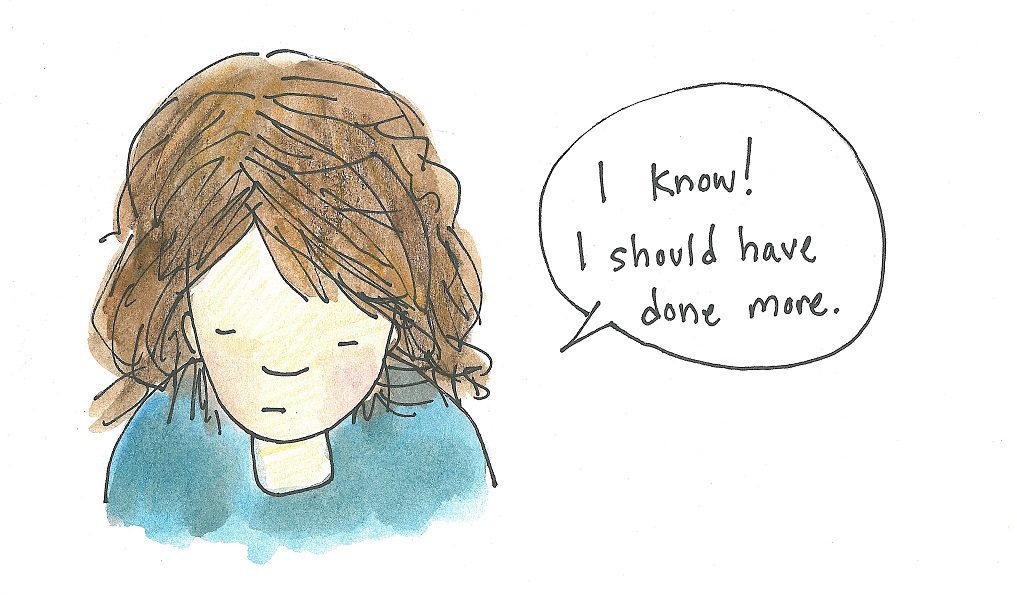Worry is a form of self denial. Humans do it to negate their circumstances and keep themselves feeling small. If they would boldy choose, make a decision, act, life would proceed much more smoothly, but this would enable greater rates of change and change can be scary, confronting and uncomfortable. Worry therefore avoids this future discomfort by creating discomfort now!
It is like a brake on a car. It gets stomped on to slow things down. And just like pushing the accelerator and brake at the same time results in no movement, just wasted fuel and strain on the vehicle, the same occurs to the human body which feels pulled forward to act and worry stops it doing so.
Worry creates strain in the body, it improves nothing and in that sense is useless. Instead speak the truth to yourself. When facing potential conflict or a decision you are scared to make, simply say “I am unsure of what to do here. Instead of being nervous or worrying, I give myself permission to go slow until I have clarity on what to do”. That way you can still feel good and take the time you need. You don’t have to worry and feel bad to slow down taking action.
Likewise if the worry is due to fear of conflict or rejection, you can say to yourself “I am scared of being hurt in this situation. I am going to nurture myself and be kind to myself, knowing I feel vulnerable. I will love and accept myself, and that is what matters most. Whatever else does occur, I will be okay, because I will be loyal to myself and treat myself well. I am strong enough to cope with whatever occurs because I am my own best friend. If I sense danger I will simply leave and I will let someone know where I am going so they can check in with me after to see if I’m okay. I won’t force myself to do things I am not ready for. It is okay to take small steps towards my goals. It is okay to do what I need to do when I can and to wait and rest until I am able”.
Many of you push yourselves too hard. You simply expect too much of yourselves and then wonder why your body is feeling fatigued or less than 100% well. If you toss and turn at night, instead of sleeping, it is your body’s way of telling you – choose peace, choose calm, choose rest. If you toss and turn at night it is a sign that your nervous system is wound up tight, activated in fight or flight or worse in freeze or collapse. You can use Tension and Trauma Releasing Exercises (TRE) to help down-regulate your nervous system, to discharge the stress and tension. When your body is more relaxed and your mind quieter it is easier to sleep.
As your body relaxes through tremoring your nervous system calms and you start to feel safer in your body, less danger signals get sent to the brain, so your defences soften. You don’t need to be hypervigilant worrying about things so much. The body is only hyped up, worrying because part of you feels unsafe.
Honour yourself. Heal the part of you that is worrying, comfort and reassure them, they need your love. For it is just a part of you that is worried or scared. It is not your whole self. Just a part, a younger part that needs to feel safe, protected and looked after. That is your job, to support that younger, inner part of you, so they don’t need to sabotage your efforts to protect you from what they fear will happen. Send them love, thank them for caring about you and bathe them in healing golden light, so they can drop their burdens and cares. Invite them into your heart, hug them and welcome them home, to rest and recover in your heart centre, your sacred room of love. There they can rest and recover feeling safe, loved and at peace. They no longer need to be afraid as you will take care of things, they can relax. You will listen to their concerns and take any appropriate measures as a result.
There are many parts of you that have strong feelings or preferences as to how you act and listening to their concerns, befriending them and then deciding after weighing up their input, will result in much smoother outcomes. They won’t need to shout at you any more or keep you small. The loud inner voices which may have kept you in pain will quieten, as they feel heard, valued, and supported. You can then go about your life without negative interference from within.
In this sense you can see worrying is a form of protection, a part of your inner guidance system that you can learn from. When you do so, the worry drops away and life becomes much more peaceful and enjoyable. Blessed BE, Amen.

